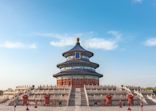EM equities are becoming an increasingly attractive option for yield-seeking investors in the current market environment, supported by various secular and cyclical drivers.
“For first time in history, EM dividend yields are sustainably above US 10-year yields,” said Tim Love, EM lead portfolio manager at GAM Investments.
“This is being fuelled by the emergence of a less US-centric global growth engine as EMs gain access to consistent and ever cheaper credit.”
China offers a compelling investment case, with structural positives stronger than ever, according to GAM. For example, the domestic economy offers powerful investment themes to mitigate near-term uncertainty – including consumer behaviour, healthcare reform, renewables, and new technology and infrastructure.
Furthermore, China’s index valuations are misleading, said Love, with bifurcation offering opportunities across styles and sectors with active exposure to avoid pockets of over-valuation and crowding in certain sectors and companies exposed to policy burden risk at the cost of optimal economic returns.
Secular and cyclical drivers
More broadly, Love has identified six drivers of EM equities: liquidity, index changes, risk/return profile, credit rating upgrades, positive secular drivers, and government reform programmes.
First, with EM equities now more liquid, diversified and accessible than ever, the asset class offers cheaper and deeper liquidity. Moreover, programme trades, quant and algorithm access will enhance this and further tighten dealing spreads, according to GAM.
Second, there have been significant index changes. Five years ago, materials and oil were 48% of the MSCI EM index, compared with 9.4% today. “This shows lower sensitivity to periods of a strong US dollar given there is less direct dollar impact on domestic earnings,” said Love.
Third, the various dynamics positively impacting EMs have created an asset class with less downside than before – thanks to China – yet with greater upside than developed markets due to long-term earnings and the re–rating potential. “The risk-return profile of the asset class is improving,” said Love.
Fourth, credit ratings in the emerging market world are rising. Eight out of the top 10 EM countries are now rated as investment grade; this compares with only four countries a decade ago.
Fifth, the well-discussed secular factors in many emerging market countries are firmly intact, even accelerating. Population growth and a higher proportion of young people, coupled with urbanisation, rising middle classes and a growing percentage of females in the workplace are all factors supporting re-ratings opportunities, especially in line with domestic reforms and local pension funds programmes being set up, according to Love.
“At the same time, productivity gains are expected from the increasing influence of artificial intelligence, robotics and cloud-based data analytics,” he said.
Finally, the political will to move ahead decisively with reforms is growing, evidenced by examples such as China’s latest Five-year plan, Saudi Arabia’s diversification into non-oil sectors, and reforms in Brazil in relation to pensions and social security.
“In line with this, the commitment to sustainability will spur growth in key areas such as solar, electric cars and more,” said Love.
Ultimately for GAM, the sharp correction in growth, thematics and materials have presented a good basis for EM exposure in three ways: first, selectively in China internet infrastructure, China game platforms and healthcare; second, via technology at the right price, sportswear, retail, travel, insurance and renewables; and finally, tapping into the reflation trade in terms of airlines, materials and property in the Philippines, Mexico and Romania.

















